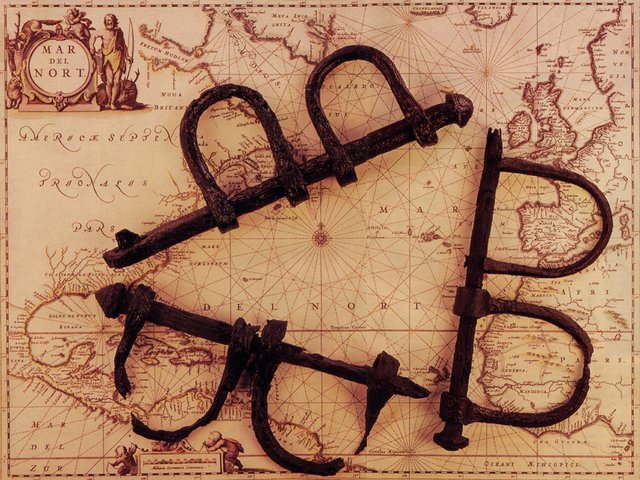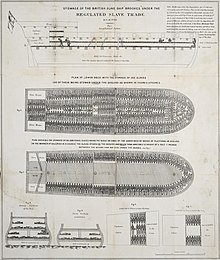
Slave ships were large cargo ships specially built or converted from the 17th to the 19th century for transporting slaves. Such ships were also known as "Guineamen" because the trade involved human trafficking to and from the Guinea coast in West Africa.
in the early 1600s, more than a century after the arrival of Europeans to the Americas,demand for unpaid labor to work plantations made slave-trading a profitable business. The Atlantic slave trade peaked in the last two decades of the 18th century, during and following the Kongo Civil War.To ensure profitability, the owners of the ships divided their hulls into holds with little headroom, so they could transport as many slaves as possible. Unhygienic conditions, dehydration, dysentery and scurvy led to a high mortality rate, on average 15% and up to a third of captives.

A painting c.1830 by the German artist Johann Moritz Rugendas depicts a scene below deck of a slave ship headed to Brazil; Rugendas had been an eyewitness to the scene


A plan of the British slave ship Brookes, showing how 454 slaves were accommodated on board after the Slave Trade Act 1788. This same ship had reportedly carried as many as 609 slaves and was 267 tons burden, making 2.3 slaves per ton.[1] Published by the Society for Effecting the Abolition of the Slave Trade